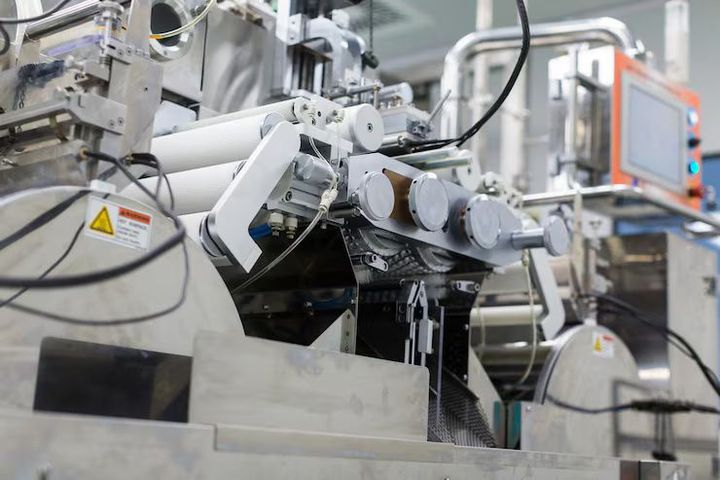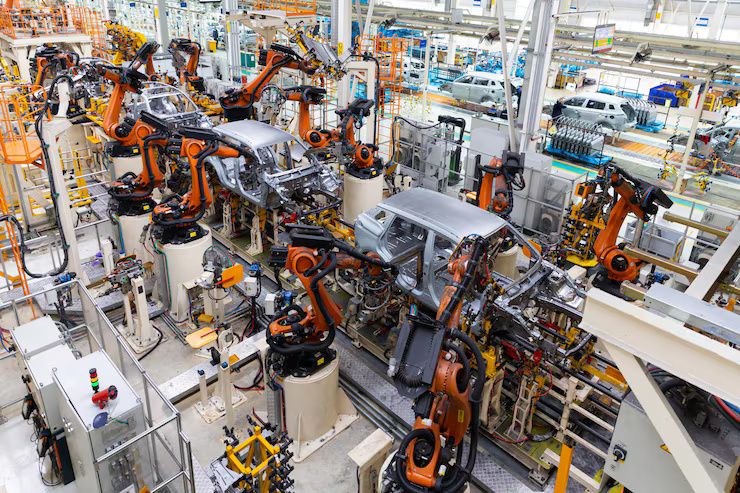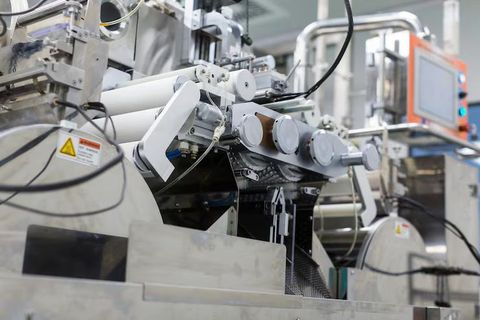
Industrial Machinery Overview: Understanding Basics, Components, and Core Functions
Industrial machinery refers to the broad class of mechanical and electromechanical equipment designed to perform tasks in manufacturing, processing, material-handling, construction, agriculture, and other industrial sectors. In essence, these machines take raw materials or semi-finished goods and apply force, motion, control or automation to produce finished products, move materials, shape items or package goods.
From early machines powered by water or steam to modern automated production lines, the function of industrial machinery is to enhance productivity, reduce human labour for repetitive tasks, increase precision, and enable scale of production. At its core, it consists of structural elements (frames, supports), power and drive systems (motors, hydraulics, belts), control systems (sensors, electronics, PLCs), and end-use tools (cutters, conveyors, presses).
Understanding industrial machinery is important because almost every manufactured good, processed item or large-scale construction or agricultural activity relies on it. Knowing the basics helps industry professionals, engineers, technicians and plant managers grasp how machines work, how to maintain them and optimise them for better performance.
 Importance – Why this topic matters today, who it affects, and what problems it solves
Importance – Why this topic matters today, who it affects, and what problems it solves
Industrial machinery matters today for several key reasons:
-
Economic productivity: Industrial machinery enables factories, plants, workshops and construction sites to produce more output with less manual effort. This leads to lower cost per unit, higher throughput and competitiveness.
-
Employment and workforce transformation: While machinery reduces some manual tasks, it creates demand for machine operators, maintenance staff, automation specialists and engineers. Thus, it affects the workforce across sectors.
-
Quality and consistency: Machines deliver consistent performance (speed, accuracy, repeatability) which is critical for high-quality production, especially in sectors like electronics, automotive or precision engineering.
-
Resource and energy efficiency: Modern machines can reduce waste, optimise material usage and consume less energy compared to older equipment, addressing sustainability and cost issues.
-
Safety and ergonomics: By mechanising heavy, repetitive or hazardous tasks, industrial machinery helps reduce workplace injuries and fatigue—though new safety risks do arise, requiring mitigation.
In India, for example, the manufacturing sector is receiving strong emphasis as part of national manufacturing goals: the output of machinery and equipment is a key part of growth, export potential and job creation.
Industrial machinery also helps solve problems such as: bottlenecks in production, high labour dependency, inconsistent product quality, inability to scale operations, high maintenance downtime, and inability to adopt advanced manufacturing practices.
Recent Updates – Trends, changes or news from the past year
Several recent updates and trends are shaping the industrial machinery sector:
-
There is a shift toward automation, robotics and smart factories. A 2025 industry outlook noted that firms are facing pressure from supply-chain disruptions, digitalisation and sustainability demands.
-
In India, manufacturing output and machine tools investment are growing: the Indian industrial machinery market is projected to grow at about 6 % CAGR for 2025–31, driven by automation and “Make in India” focus.
-
Regulatory updates: For example, India’s machine-safety regulations received a major update in June 2025, with new compliance timelines set for 1 Sept 2026 for broad classes of machinery. C-
These trends mean that stakeholders in industrial machinery must adapt systems to digital control, data analytics (condition monitoring and predictive maintenance), modular design, and regulatory compliance.
Here is a simple table summarising some of those trends:
| Trend | Description |
|---|---|
| Automation & robotics | More machines integrating sensors, PLCs/SCADA, remote monitoring |
| Sustainability & efficiency | Machines using less energy, producing less waste, supporting circular economy |
| Local manufacturing focus | India and other countries pushing domestic production of machinery parts and complete machines |
| Regulatory tightening | Machine-safety standards, export/import rules, trade tariffs impacting machine flows |
| Predictive maintenance & analytics | Use of data to anticipate failures, optimise maintenance rather than reactive fixes |
Laws or Policies – How the topic is affected by rules, regulations or government programmes (in India)
Industrial machinery in India is subject to various rules, policies and programmes that affect manufacturing, safety, trade and investment. Some of the key considerations:
-
Safety regulations: The recent update in 2025 to machine-safety regulation mandates broad compliance for machinery under the Machinery and Electrical Equipment Safety (Omnibus Technical Regulation) Order originally issued August 2024; effective date extended to 1 September 2026.
-
“Make in India” and domestic manufacturing push: The government’s manufacturing strategy emphasises increasing the domestic value-addition of goods including machinery parts, encouraging foreign direct investment, and supporting export growth.
-
Export and trade policy impacts: Machinery parts and complete machinery are affected by export/import tariffs, quality-control orders, and trade agreements. For example, the domestic textile machinery sector has raised concerns about Quality Control Orders (QCO) impacting import of specialised machines.
-
Industry-specific standards: Many machine types (e.g., in construction, agriculture, food processing) must meet local standards for safety, emissions, ergonomics, and energy efficiency.
-
Incentive programmes: There are state and central-level schemes promoting modernization, digitization of factories, machine tool upgradation, and automation adoption (especially in “Priority Sector” manufacturing).
Thus, any organisation dealing with industrial machinery must be aware of compliance requirements, policy incentives, trade rules and local manufacturing guidelines.
Tools and Resources – Helpful tools, apps, calculators, websites, templates or services
Here are several tools and resources that may be useful for those working with or studying industrial machinery:
-
Machine component reference guides: Websites listing components like motors, drives, seals, sensors, couplings. For example, a site explaining types of parts: transmission parts, supporting parts, control parts.
-
Industry-outlook and market research portals: For example, the “Machinery Industry Outlook 2025” report includes growth data, innovation trends.
-
Safety and compliance documents: Standards such as the “Machinery Basic Building Blocks 4.1 Introduction to Machinery” document from OPC Foundation gives guidance on mechanical engineering machine design.
-
Condition-monitoring / predictive-maintenance tools: Platforms or sensor-packages that track vibration, temperature, load in machines and alert for maintenance (see academic work on prescriptive agents for maintenance in 2025)
-
Government policy trackers: Websites such as the Indian government’s “Manufacturing Tracker 2025” show manufacturing indicators, sectors, policies.
-
Standard parts libraries / CAD-templates: Many CAD libraries offer modelling of common machine parts (bearings, shafts, hydraulics) for designers.
-
Cost-/energy-calculator templates: Sheets where engineers can input machine-type, power rating, operating hours to estimate energy consumption, CO₂ emissions, operating cost (though the user should adapt to local cost data).
Using these tools helps engineers, managers or students gain deeper insight into machine design, operation, maintenance, regulatory compliance and economic performance.
FAQs – Frequently asked questions and clear factual answers
Q1: What are the main components of industrial machinery?
A: Typical components include:
-
Power and drive systems (electric motors, hydraulic pumps, belts, chains)
-
Transmission and motion-elements (gears, reducers, chains, shafts)
-
Support and structural elements (frames, bearings, brackets)
-
Control and sensing systems (sensors, PLCs, human-machine interface)
-
End-effectors or functional tooling (cutters, conveyors, presses, robotic arms)
Q2: Why is maintenance important for industrial machinery?
A: Because machines are capital-intensive and downtime can be costly, regular maintenance helps ensure reliability, safety, efficiency and longevity. Predictive maintenance (using condition monitoring and analytics) is increasingly important to move beyond reactive fixes.
Q3: How is digitalisation impacting industrial machinery?
A: Digitalisation means more machines include sensors, network connectivity (IIoT), data analytics, remote monitoring/control and sometimes autonomous functions. This enables greater efficiency, better quality control and more flexible manufacturing.
Q4: What regulatory issues affect industrial machinery in India?
A: Key regulatory issues include machine-safety standards (e.g., Machinery & Electrical Equipment Safety Order), import/export controls on machinery and parts, domestic manufacturing incentives under “Make in India”, and trade-policy changes (e.g., Quality Control Orders for certain machinery types).
Q5: How do I select the right machinery for my production process?
A: Although this is more technical than the overview here, important factors include: required output capacity, cycle time, precision/accuracy needed, space/layout constraints, energy consumption, integration with existing process/control systems, maintenance support and compliance with safety/regulatory standards. Consulting machinery suppliers, reviewing technical specifications and planning for lifecycle costs is advisable.
Conclusion
Industrial machinery is a foundational element of modern manufacturing, processing and construction industries. By understanding what industrial machinery is, why it matters, its core components and how it is evolving through trends like automation and digitalisation, readers gain a better view of how industries operate and the critical role of machines. In the Indian context, regulatory frameworks, manufacturing policy and domestic market growth add further importance to this topic. With useful tools and resources at hand, individuals and organisations can make more informed decisions about machine design, selection, operation, maintenance and compliance. As industrial processes continue to evolve, staying updated with machine-technology trends and policies will be valuable for staying competitive and efficient.






